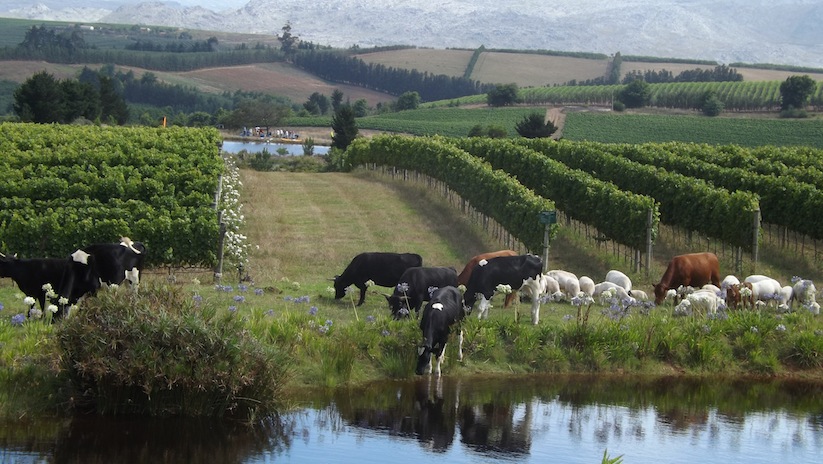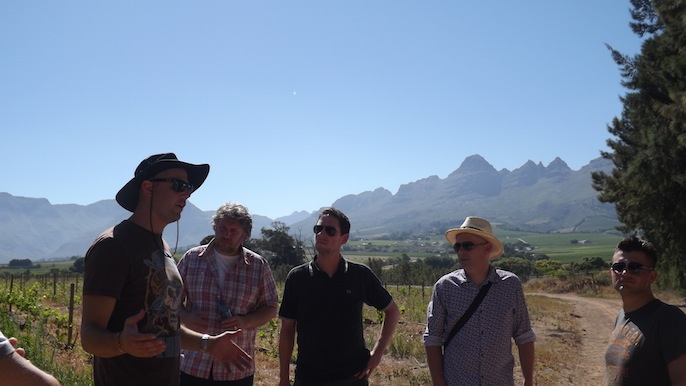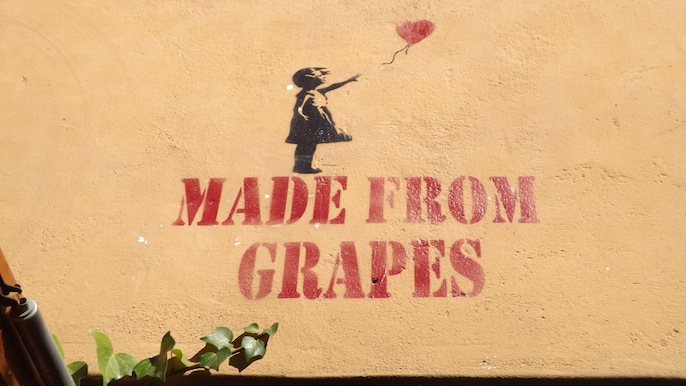A Brief Perspective
The Real Wine Revolution – no shots were fired, no-one is bleeding, a few professional carpers have taken umbrage and harrumphed off into the distance complaining about emperor’s new clothes. The world moves on, as a revolution is but one turn of the wheel in the pattern of history.
Because it is not a movement but rather a series of personal vigneron journeys to discover how to reshape their wines, it is difficult to precisely quantify the nature of natural wine. These journeys are often prompted by sudden epiphanies, realisations that the wines you most enjoy drinking most are often the ones with the least interventions. Go reconfigure, so to speak.

The natural/real/naked/low-no-intervention (that rolls off the tongue!) wine phenomenon is not built on the flimsy foundation of hype, but is based on grafting judiciously-and-working-more-presciently, doing more groundwork in order ultimately to be able to fiddle less with the juice. This is truly walking the walk instead of talking the talk – no-one ever made decent natural tasting wines nor buttered any parsnips with mere good intentions nor fine words.
A natural winemaker always works according to his/her taste rather than blindly following a recipe and is forever simplifying the process as opposed to working to build layers of “architectural” flavour. Perhaps the best definition is that the natural winemaker follows the wine rather than makes the wine follow him/her.
A couple of weeks ago we were at Caroline’s Wine Shop in Strand Street, Cape Town, co-hosting a mini Natural Wine Fair for private customers, collectors, bloggers and wine growers, an opportunity for the local wine cognoscenti to get down and clean with some very impressive natural wine specimens. It should be noted that we were not starting in grand funk territory, nothing to frighten the zebras, but rather with wines from established growers who had evolved and perfected their low-interventionist style over many vintages.
The audience came to taste and experience the wines in the round and were prepared to have their preconceptions tickled and their palates jolted. Most tasters felt the energy, perceived the purity and recognised the depth of flavour of the wines on show. You could see cogs whirring and some vignerons thinking “I would love to make these wines.” There is a South African proverb that says that once you’ve found your first diamond you will never give up looking. Or put another way that which first appeals on the visceral level stimulates the intellectual desire to investigate new worlds.

In search of taste
One always assumes that wine is a fairly natural product, but this is not the case and there are many dozens of chemical interventions between grape and lip. Good natural winemaking, however, entails no compromises, from adhering to exacting standards in the vineyard to following the wine closely in the winery. One clumsy intervention may introduce an unwonted and unwanted element to the whole, an imposition that stifles the natural expression of flavour. Such supernumerary components detract from the harmony of the wine itself.
At The Winery of Good Hope Alex Dale and his team are transforming the tenor of the wines, by taking a series of steps such as identifying the best vineyards to work with, understanding the terroir and reducing treatments in the vines, and thereafter, in the winery, espousing natural yeast ferments (no inoculation), decreasing the sulphur additions, handling the juice more gently and relaxing the oak regime. The result of these holistic endeavours? Nudity, a Syrah where less is more, a wine comfortable in its own skin. It seems counterintuitive to argue in favour of shyer wines when the vogue for the past twenty years has been to construct ostentatious wines that stand out from the crowd, but when transparency rather than opaqueness is increasingly prized amongst those who have to drink the stuff, it is a logical, and – dare one say – natural course to take.
When you arrive at this juncture in the journey then you may ask yourself “if I can make a cracking no-sulphur wine then should I not modify my entire winemaking approach accordingly?” That is where the small investigative steps become the commercial leap of faith.
Brian and Marion Smith’s winery is relatively small by South African standards. They have beautiful healthy-looking vines in Elgin Valley planted from scratch and the viticulture is organic, bordering on biodynamic. Their first fermentations were controlled; the next stage is apparently to introduce enzyme-free wild ferments and go down the low/no sulphur route. Risky, yes, but one can start with a single tank, use the lees as protection and other techniques that allow you to pursue this path. Learning through unlearning, remaking by retasting, trial and error and success – this is the future of winemaking in South Africa. Ultimately, everyone wants to make the wine that they love to drink.

The Swartland, says Craig Hawkins, winemaker at Lammershoek, is the place where growers go to express themselves. The Swartland Revolution refers to 25 or so growers who have taken advantage of being located in the back of beyond to become more self-sufficient, to find their unique voice, and to make wines in keeping with their rugged environment. Craig relishes the freedom to think laterally, work instinctively and push the boundaries. He is not afraid of being considered natural as he is expressing his love of the Swartland – the natural way is indeed second nature to him.
Small growers and wineries that are flipping the received wisdom thinking now of the smaller picture – which will become eventually the bigger picture. In other words you can achieve a strong commercial identity by working naturally, not because it is trendy to do so, but because it is right for the wine and it is right for them.

